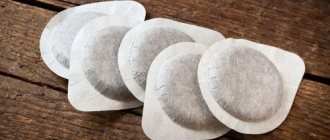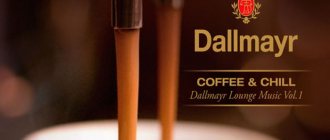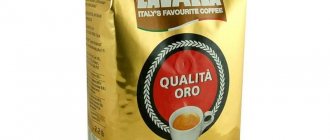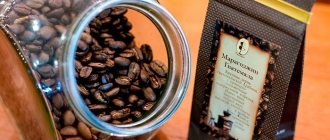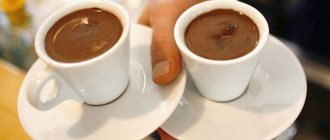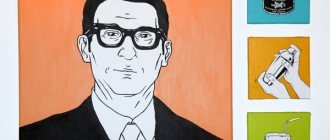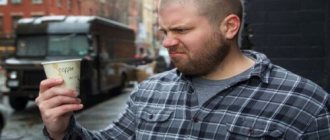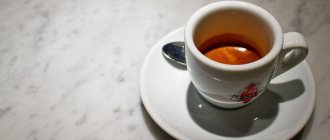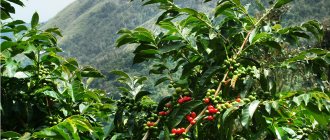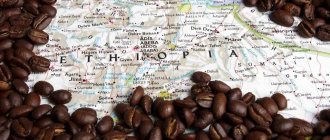Neutrino cooling
- the process of cooling the stellar interior by neutrinos formed in them, which freely carry away energy from the entire volume of the core, since the star is transparent to low-energy neutrinos.
The rate of such volumetric
neutrino cooling, in contrast to classical
surface
photon cooling, is not limited by the processes of energy transfer from the interior of the star to its photosphere, therefore this cooling mechanism is very effective.
There are several mechanisms of neutrino cooling that occur at different stages of stellar evolution.
Content
- 1 The emergence of the Ukrainian Registered Cossacks (URK)
- 2 Structure and number of URC 2.1 Foreign divisions of URC
- 5.1 State, church figures and organizations awarded orders of the URC
The emergence of the Ukrainian Registered Cossacks (URK)
The URC considers itself the successor and continuer of the traditions of the registered Cossacks of Ukraine.
Ukrainian registered Cossacks
In 2002, a public meeting, most of which were retired military men who had previously been members of the Ukrainian Cossacks (UK) organization (together with the future hetman of the URC, who held one of the leading positions in the UK), created the Ukrainian Registered Cossacks (URK) organization. and approved the position of hetman. The new organization actually created a split in the public organization of the Criminal Code. To the position of hetman, the meeting unanimously elected the initiator of the creation of the URC, a famous scientist, corresponding member of the National Academy of Sciences of Ukraine, Doctor of Technical Sciences, rector of the Donetsk State Institute of Artificial Intelligence of the Ministry of Education and Science of Ukraine, director of the Institute of Artificial Intelligence Problems, Professor Anatoly Ivanovich Shevchenko.
The motto of the Ukrainian Registered Cossacks: “Towards a strong state and the well-being of the people of Ukraine - through the spirituality and patriotism of every person.”
Where did the concept come from?
No one can give a definite answer. Although they offer various theories that are inextricably linked with the world on the other side of the law. The main version is considered to be “lesson convicts”, from whom they took the first two letters from each word and combined them. These gentlemen went into temporary exile and worked in logging, and after serving their sentences they could return to normal life.
Unfortunately, it is known that such a “urka” often committed a second crime and returned to hard labor.
Linguists put forward their own options. One is from the Turkic languages, the second is attributed to Odessa Jews:
- “urk” means a fierce person, and the root “ur” is included in the Kazakh “urlyk” and “ur”, respectively, “robbery” and “thief”;
- “Urem” is a “poor man,” which could gradually become a little distorted and generally refer to any person who was imprisoned.
Structure and number of URC
Regional, city, and district Cossack organizations are registered and operate in the URC in all regions of Ukraine, in the Autonomous Republic of Crimea, Kiev, and Sevastopol. The URC unites, according to its own data, almost 70 thousand Cossacks[2]. The URC is headed by the hetman of the Ukrainian Registered Cossacks. Regional and district organizations are headed by chief atamans and district atamans, respectively.[3] The governing bodies consist of the General Staff of the URC in Kyiv, the headquarters of the URC in regions, cities and district centers.
Foreign divisions of the URC
Divisions of the Ukrainian Registered Cossacks operate in the United States of America, Australia, Japan, etc.
Presentation of Jeanie Martin with the Beregini certificate of the Ukrainian Registered Cossacks in the state of Texas. Donetsk, 2008
.
Who are the Turks really?
Previously, completely different peoples lived in Turkey: Armenians, Greeks, Jews, Assyrians.
Where did the Turks come from? Who are they? Seljuks
According to official science, the first Turkic-speaking peoples appeared in Asia Minor in the sixth century. The Byzantine rulers settled the Bulgars here, the Arabs attracted Turkic-speaking Muslims from Central Asia here, and the Armenian kings settled the Avars to protect the outskirts. However, these tribes disappeared, dissolving into the local population. The real ancestors of the Turks were the Seljuks - Turkic-speaking nomadic peoples who lived in Central Asia and Altai (the language of the Turks belongs to the Altai language family), who concentrated around the Oghuz tribe, whose rulers converted to Islam. These were Turkmens, Kynyks, Avshars, Kays, Karamans and other peoples. First, the Seljuks strengthened themselves in Central Asia and conquered Khorezm and Iran. In 1055 they captured the capital of the Caliphate, Baghdad, and moved west. Farmers from Iran and Arab Iraq joined their ranks. The Seljuk Empire grew, they invaded Central Asia, conquered Armenia and Georgia, occupied Syria and Palestine, significantly displacing Byzantium. In the middle of the 13th century, the empire, unable to survive the Mongol invasion, collapsed. In 1227, the Kayi tribe moved into Seljuk territory, ruled by Ertorgrul, whose son Osman became the founder of the Turkish state, which was later called the Ottoman Empire.
Mixture
The invasion of the Mongols caused a new flow of settlers, and in the 13th century tribes from Khorezm came to Asia Minor. And today the ancient Khorzum tribe roams throughout Turkey. From the 12th century, the Turks began to settle down, mixing with indigenous peoples, which marked the beginning of the Islamization and Turkization of the population. At the same time, Pechenegs, Romanians and Eastern Slavs migrated from the northwest to Asia Minor. The Turkish people were formed by the end of the century. Already in 1327, the official language in some areas of Turkey was Turkic, not Persian. Modern Turkish science believes that the population of Turkey consists of 70% descendants of the Seljuk Turks and 30% of the indigenous population.
Another version
Russian science thought differently. The encyclopedia of Efron and Brockhaus indicated that the ancestors of the Turks were “Ural-Altai tribes,” but due to the mass of settlers of other nationalities, they have long lost their authenticity, and now the Turks are the descendants of Greeks, Bulgarians, Serbs, Albanians and Armenians. It turned out that such confidence is based on the history of the warlike Ottomans. First they conquered the territories of Byzantium, then the Balkans, Greece, and Egypt. And captives and slaves were taken out from everywhere. The conquered peoples paid with slaves; children and wives were taken from the Slavs for debts. Turks married Armenians, Slavs, and Greeks. And the children inherited the traits of these peoples. There was another process that led to the “Turkification” of the Greeks and other peoples who were previously under the protection of Byzantium. After Constantinople was barbarously sacked by the Crusaders in 1204, the Greeks no longer considered the Latins allies. Many chose to remain “under the Ottomans” and pay the jizya, a tax for infidels, rather than leaving for Europe. Just at this time, Islamic preachers appeared, preaching that there were not many differences between religions and persuading the Byzantines to convert to Islam.
Genetics
Genetic studies confirm that Turks are heterogeneous. Almost a quarter of Anatolian Turks can be classified as autochthonous peoples, a quarter can be classified as Caucasian tribes, 11% have a Phoenician gallogroup (these are descendants of the Greeks), 4% of the population have East Slavic roots. Anthropologists believe that the average Turk is a representative of the Caucasian race, but the Seljuk Turks were not Caucasians. Central Asia is still inhabited by monogoloid peoples.
What do the Turks think?
The Turkish ethnographer Mahturk became interested in this question. He went to Central Asia and Altai to find there nationalities related to the Turks, to find common legends, identical elements in patterns and clothing, and common rituals. He climbed into remote villages and remote camps, but found nothing. Moreover, he was surprised that anthropologically the people in Central Asia were very different from the Turks. And then the professor had a theory that official history embellishes reality, and in the 12th century the Turkic tribes began their migration due to lack of food. They moved first to the southeast, and then to Iran and Asia Minor. The ethnographer noted that there are still purebred Turks in Turkey; they have retained their Mongoloid appearance and live compactly in just a few regions of the country. According to statistics, there are now 89 million Turks living in the world. 59 million of them live in Turkey, five in Syria and Iraq, and almost seven in Europe. Germany has the largest number of Turks - four million, Bulgaria has 800,000 Turks, and Britain has half a million. A million Turks live in the Netherlands and Austria. In Belgium - 200,000 Turks, in Greece - 120,000, in Switzerland - 100,000, in Macedonia - 78,000, in Denmark - 60,000, in Romania - up to 80,000, in Italy - 21,000. There are 500,000 Turks in the USA . Only 105,058 Turks live in Russia.
Source
International activities of the Ukrainian Registered Cossacks
The Ukrainian registered Cossacks carry out active international activities. The main goal of the URC’s work in this direction is to present Ukraine at the international level as an independent and democratic state.
On March 24, 2005, a delegation of the Ukrainian Registered Cossacks met at the Patriarchal residence with Patriarch Alexy II of Moscow. During the meeting, the problems of the Orthodox Church in Ukraine were discussed, as well as the issue of strengthening friendship between the Orthodox peoples of Ukraine and Russia. The Primate of the Russian Orthodox Church was presented with a crystal mace as a symbol of spiritual power and respect from the Ukrainian Registered Cossacks.[1][2]
On March 24, 2004, a delegation of the Ukrainian Registered Cossacks was received in the Vatican by Pope John Paul II. John Paul II, welcoming the delegation, noted that he sincerely wishes goodness and harmony to the Ukrainian people and conveyed God's blessing to the Ukrainian registered Cossacks[3] and the entire people of Ukraine.
When is it appropriate to use?
Today, at the everyday level, the word is abusive and serves to insult the interlocutor. Such a conversation will inevitably slide into mutual accusations.
Some of the gloomy associations can be diluted. What is "urka"? This word also appeared in gaming slang. Gamers happily and out of consonance call representatives of the Orc race this way, and many of them proudly use the colorful self-name.
However, outside the gaming community and in the wild, it is better for people to rid their vocabulary of this jargon.
Awards of the Ukrainian Registered Cossacks
In accordance with the Regulations on awarding, orders of the URC are awarded to state, church and political figures, citizens of Ukraine and other states, members of the rank and file and commanding staff of the URC who have made a significant contribution to strengthening the state independence of Ukraine, the revival of the historical, cultural, spiritual and patriotic traditions of the Ukrainian people, strengthening friendly interstate ties and cooperation. According to the Regulations, the awarding is carried out in the following order: first, the order of the 3rd degree is awarded, then the 2nd degree and 1st degree. In exceptional cases, for special merits, awards are allowed in violation of the existing procedure by decision of the Rada of the General Foreman of the URC.
| URC award - “Bronze Cossack Cross of the 3rd degree” | URC award - “Silver Cossack Cross, 2nd degree” | URC award - “Golden Cossack Cross, 1st degree” |
State, church figures and organizations awarded orders of the URC
- Alexy II (Patriarch of Moscow)[4]
What should the handle of a “correct” Turk have?
An important role is played by the shape, length and material of the handle of the cezve. To avoid burns and discomfort while making coffee, the handle is made long and extended upward from the heat source. The most suitable material for the handle with the lowest thermal conductivity, ideally wood. When brewing coffee, the wooden handle will not heat up and emit an unpleasant odor, unlike plastic, for example. The handle must be attached to the vessel with bolts or rivets. It is better not to purchase Turks where the handle is attached with solder, since when heated there is a risk that low-quality solder may soften and the handle will simply fall off.
If, when choosing a Turk for brewing coffee, you adhere to these rules for selecting a shape, then you will be able to prepare a rich, aromatic and tasty drink.
It's time to take the Turk off the fire!
Links
- PATRIARCH ALEXY RECEIVED THE DELEGATION OF UKRAINIAN COSSACKS
- Ukrainian registered Cossacks will help sailors with computers, investors and strengthening statehood in Crimea
- NEW PROJECT OF “UKRAINIAN REGISTERED COSSACKS”
- Ukrainian registered Cossacks supported Israel
- The Great Council of the Ukrainian Registered Cossacks was held in Sevastopol
- Registered Cossacks encroach on the budget
- Registered Cossacks will take patronage over military sailors
- Ukrainian registered Cossacks joined the ranks of their Danube associates
- A Cossack sees a Cossack from afar. Part 1
- Characteristic alliance. About the Uniate Register of Ukrainian Cossacks
- Ukrainian Cossacks support the decision of the Crimean parliament to declare autonomy a “territory without NATO”
- Cossacks will guard the Ukrainian border
- Ukrainian Cossacks refused to follow Moskal's advice
———
The correct form of a Turk is a narrow neck with a wide bottom.
Visually, the ideal Turka resembles a jug: a narrow neck with a wide bottom . This geometry of the Turk indicates the correct slope of its walls. This allows the coffee grounds to settle to the bottom and cook properly. If we talk about a copper Turk, then the wall thickness should be at least 1.5 mm. This also contributes to proper heating of the vessel and the delicious drink that comes out.
If you are the owner of a Turk with a wide neck or without it at all, then such a Turk will not prepare the right drink. The ground coffee will simply simmer on the surface without forming a coffee jam. This way there will be no coffee oils or foam left in the drink. There is also a risk that without the correct narrow neck, your drink will boil over and “run away”.
